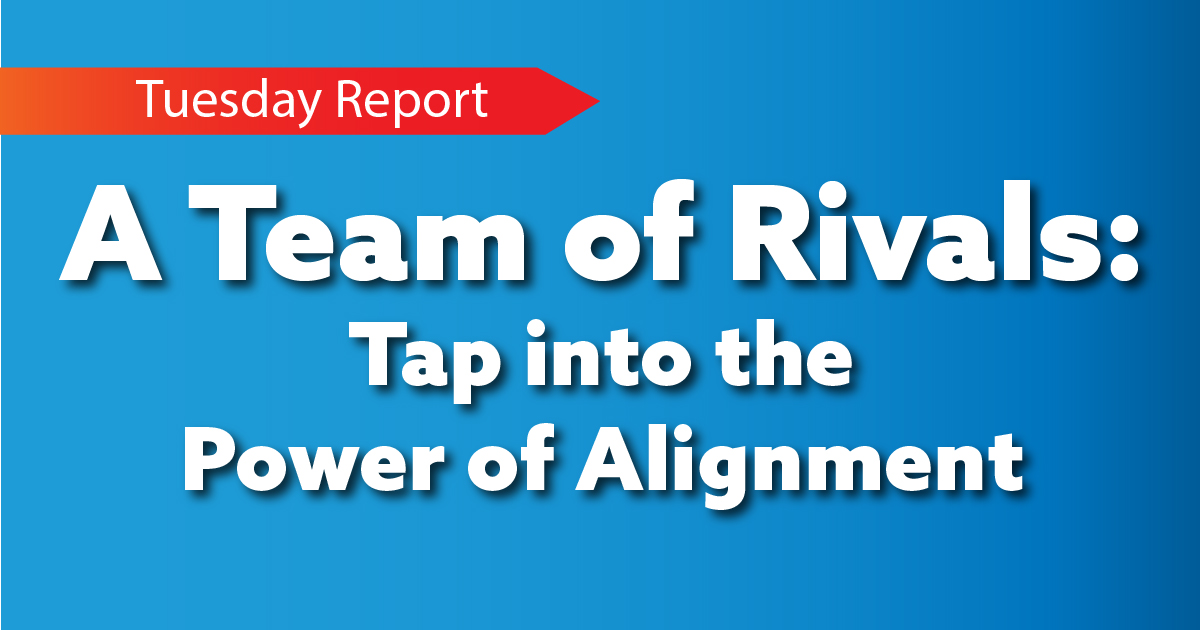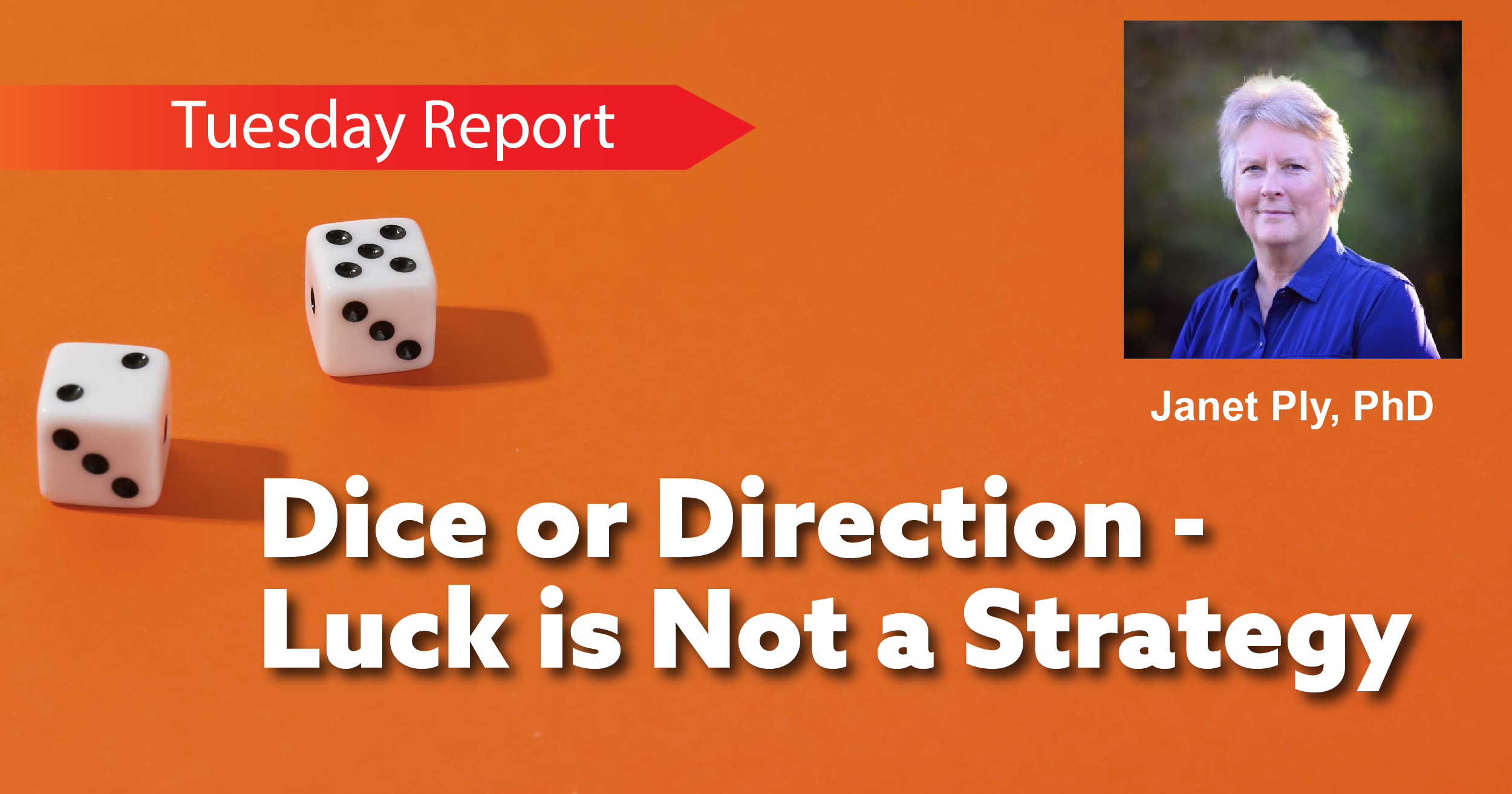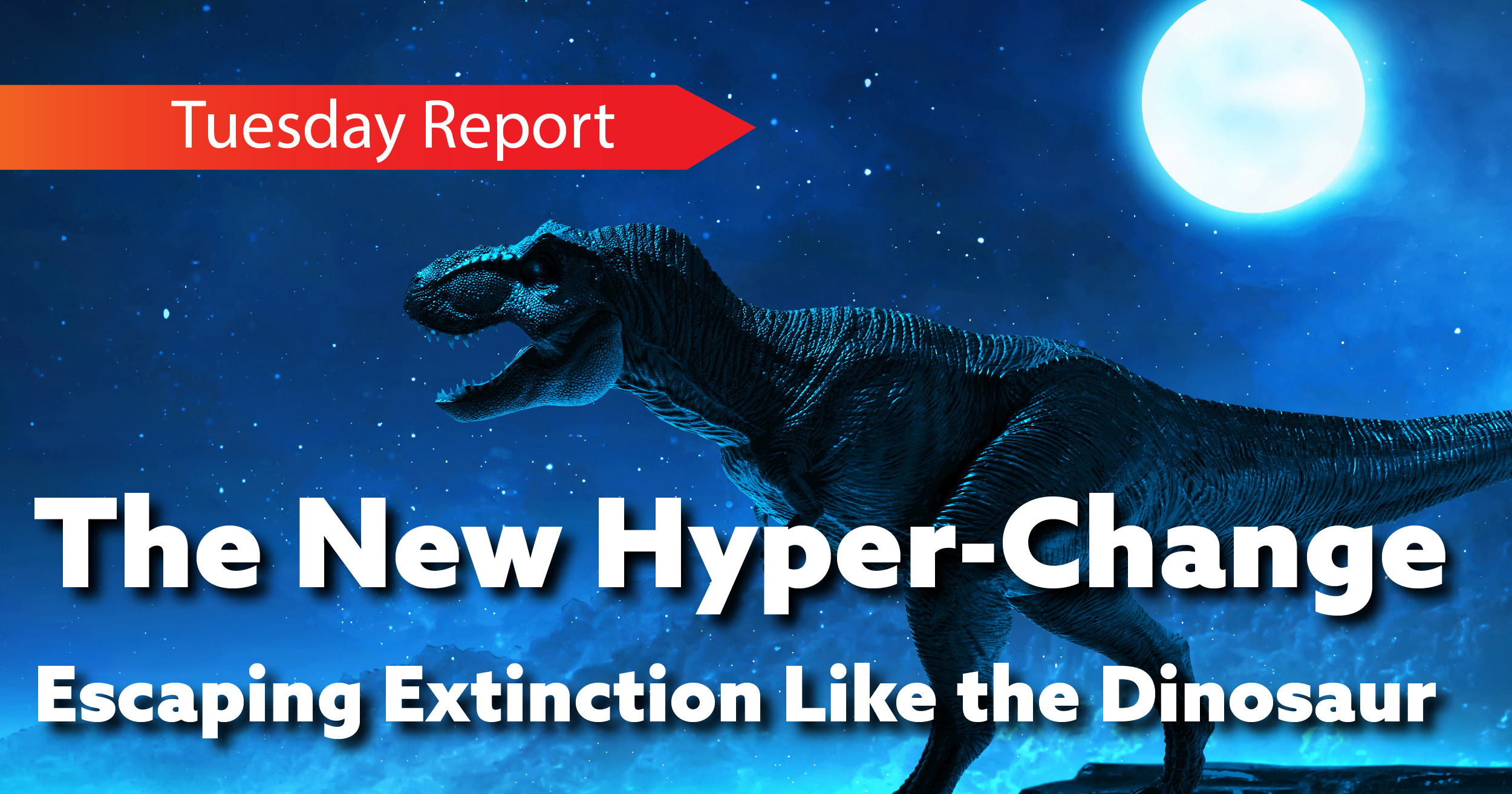Alignment Based Growth Puts People Together Who Don’t Agree
What do you think of the concept, a “Team of Rivals”?—I love the phrase, but it wouldn’t work today in the way that it was originally intended. However, there is a compelling way to put the concept of “Team of Rivals” to work in your organization that could truly be your key differentiator.
The phrase, “a team of rivals,” was created by Abraham Lincoln during the American Civil War (1860-1864). It was a genius concept at the time. Lincoln gathered into his cabinet those who had been his rivals during his first presidential campaign. That enabled him to harness the genius of those who opposed him, some of the best minds in America. They became a “team of rivals.”
Historians agree that Lincoln’s idea worked. But why did it work then? Intentionally recruiting a team of rivals today to lead an organization would likely be disastrous.
A team of rivals worked in Lincoln’s day because organizations functioned in a very different way than they do today. The organizational underpinnings of Lincoln’s time were traditional processes and rigid hierarchies. The final important decisions were made at the top. Decisions could take days, weeks, and months because that is the way communication flowed then—communication powered by horse, wagon, and courier.
Today’s successful teams function on alignment based principles and tools, not on rivalry. Alignment Based Growth takes the organization to rapid success as no other process can. It creates a focus that is a true imperative that unifies and drives decisions and behaviors. That clarity of focus and the cohesion of alignment create the energy of breakthroughs, successful product launches, soaring revenues, growing compensation and huge future opportunity.
Alignment Based Growth (ABG) is the answer to the “people puzzle”: Why don’t teams function with a similar reliability to technology? ABG enables people to become predictably able to achieve the impossible together. It turns a team of rivals into a committed, aligned, and outcome achieving team.
ABG is the most important concept since Process Improvement, Total Quality Management, and Reengineering for this reason. Process Improvement and TQM allowed the world to become globally effective in producing and delivering goods and services. But people have been singularly difficult to align to provide that same level of predictability.
.
Making Rivalry Work in Teams
But how do you do it? Alignment Based Growth harnesses rivalling points of view and aligns them because everyone in the room has a gut-wrenching will to achieve the same goal. When they are truly aligned, their different ways of thinking no longer tear the organization apart and create division. Instead those different ways of thinking provide different approaches to achieving that goal and hone the strategy. And everyone agrees the goal is non-negotiable, failure is not an option.
Aligned teams are a rarity in the world of organizations today—the underlying and most important reason why so many organizations fail. Yet aligned teams can become the norm in an organization today that follows the alignment process—reducing the time that it takes to succeed enormously and reducing the cost of bloated employee numbers and missed opportunities.
Here are the components of aligned teams:
- Alignment Based Growth Defines the Goal and the Payoff. In ABG, organizations treat their key leaders like a group of prized investors in organizations. When you make a presentation to a group of investors you see them as the people who can make your organization exceed all expectations. You give them the payoff and a timeline, whether that is bonuses, an equity event, or career path and growth. Aligned team members are more than employees with an indefinite commitment to the organization. They know what it will mean to achieve the organizational goal and what is the timeline.
- ABG Convenes the Team for Aligned Achievement. Convening the team that will experience successful alignment is much more than working with a recruiter to find the best resumes and candidates. It ends the balance-sheet-driven hiring and laying off of employees and the dynamic of employees who leave for the first, somewhat-better-than-you opportunity.
Alignment Based teams are chosen, not just because of their resume and experience, but also because of their ability to commit to an outcome that will benefit them as much as the organization they serve. They are not just searching for the right job, but for the opportunity that will create compensation and a future. - ABG Defines the Alignment Timeline. Teams cannot align indefinitely, in part because their configuration changes. The WWII invasion of Europe to defeat Hitler took a matter of weeks—it likely would have failed if the invasion had been longer. An NFL team aligns for a season; the next season will likely have many different players.
Initiatives measured in more than three years rarely happen. The shorter the initiative, the better chance it has of succeeding. Alignment Based Growth is based on knowing how long an initiative will last. There are exceptions to this rule. Some organizations with very stable leadership teams can sustain strong alignment for many years, but they must continue to keep the team focused on what their alignment means for how they act and how they lead. - ABG Creates a Rarity—the Truly Aligned Executive Team. This is a key differentiator: Organizations have gotten to the point that they have the same technologies and similar organizational tools. The most wildly differing aspect of organizations is the alignment of their teams—especially their executive team—around a compelling imperative. Organizations with poorer technology and a more aligned organization will actually win out.
Alignment Based Growth is for organizations that are facing pain points that threaten the success—and often the survival–of the organization. They are facing brutal competition, underperforming leadership teams, toxic relationships, faltering performance. ABG creates teams that achieve the impossible: Bringing predictably strong results to human enterprise. It is not easy and it will involve some tough decisions about people. But it is straightforward…and the results are transformational.






